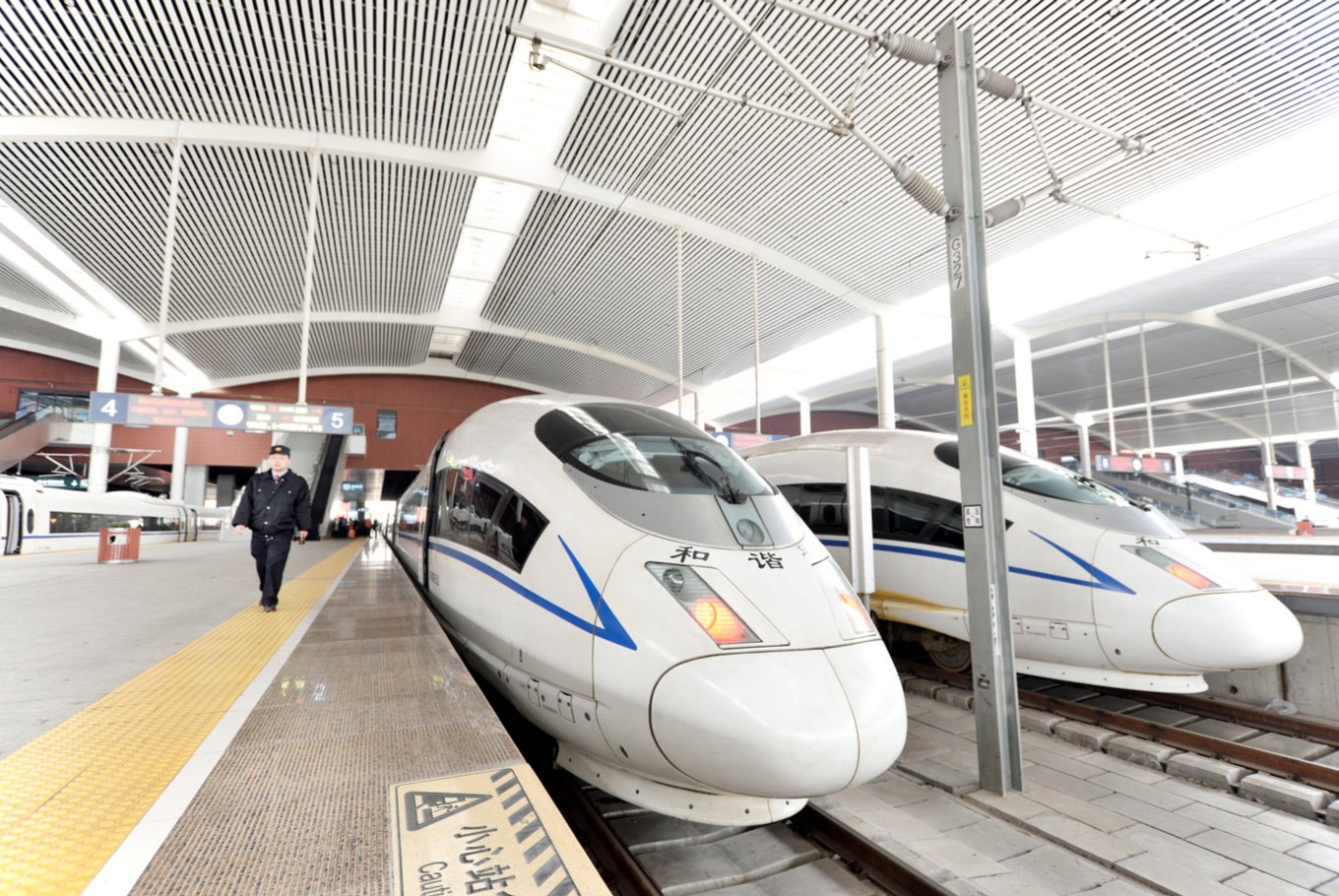As BRI rolls ahead, China's legacy will be high-speed rail
Tokyo may have pioneered it but it is China that has mainstreamed it.
Change Size
 Super fast: A high speed train from Harbin to Qiqihar waits to pull out of the train station in Harbin, northeast China's Heilongjiang province. (Shutterstock.com/WaitForLight )
Super fast: A high speed train from Harbin to Qiqihar waits to pull out of the train station in Harbin, northeast China's Heilongjiang province. (Shutterstock.com/WaitForLight )
T
he Mongol warrior Genghis Khan is considered to be the greatest strategist in the history of mankind. His personal discipline, focus on meritocracy and barbaric ways led him to conquer vast amounts of territory in a short span of time. Yet he would have been a largely forgotten chapter had it not been for his grandson Kublai Khan who expanded the large empire Genghis left behind and made it into the largest empire ever.
Even with Kublai’s role, the Mongols Empire existed for only 150 years — a fraction of the 1,000 years of Roman rule that dominated the planet. The biggest tragedy about Mongol Empire, however, is that today barely anyone on the planet has anything to remember it by. While the British and Romans brought in stadiums, buildings, railways, universities etc, the Mongols did little in leaving their legacy behind.
In terms of the last century the United States has let it be known that today’s technological edge is largely their contribution — be it the internet, mobile phones or even electric cars. In the coming century odds are that it will be China that will leave its global mark. Financial experts have a tilt toward technological giants like Alibaba and Tencent but there is a company that deserves applause for the breathtaking speed, with which it has built infrastructure in China: China Railway and its legacy will undoubtedly be the high-speed rail network.
This is the company responsible for the routine rail network as well as the high speed rail network initiated by China a decade ago. Railways with a maximum speed of 250 kilometers per hour are considered as high speed rail. Today China has built almost 25,000 km of high-speed rail (HSR) with one of its most popular routes being between Beijing and Shanghai that covers 1,318 km in a little over four hours. The rest of the world combined has a HSR network of 7,000 km. Given the low labor cost as well as the network size, World Bank believes construction cost in China is lower by 25 to 30 percent in comparison to Europe and US.
The initiative in itself is not unsurprising. Large countries spread across a wide geographical expanse need several modes of transport Road, railways and air have existed for long now with HSR making strides only recently. HSR is glamorous but has not come cheap to China.
Total debt for China Railway is over a whopping US$700 billion and is expected to rise to $1 trillion by 2020 as it expands its network with ferocious speed. Its principal and interest payments last year alone accounted for $80 billion — one-and-a-half times larger than the market value of Tesla.
The company won funding of $1.8 billion by swapping debt into equity to help it reduce debt recently. To compound the high debt level there is also the relative competitiveness of opting for high speed rail. Too short a distance between two locations — people consider the road and too long a distance — people consider taking a flight. This has meant that utilization on the high speed rail has been far from optimum barring a few routes like the Beijing — Shanghai route wherein the company makes a profit of almost a $1 billion. Either way — judging railway projects in periods of 5 — 7 years is unwise given their utility for decades.
Other countries have tried going the HSR route but simply lack the capability or will to execute such ambitious projects. Indonesia has had its share of delays with regards to the Jakarta — Bandung route. Malaysia has deferred the proposed HSR with Singapore after Mahathir Mohamad made a grand comeback as prime minister. India’s bullet train from Mumbai to Ahmedabad, scheduled to be operational from 2023, is almost likely to be delayed given India’s inherent weakness in constructing grand projects.
Yet when these are built there will be Japanese and Chinese involvement in the construction. Tokyo may have pioneered it but it is China that has mainstreamed it. That will only go deeper as its Belt and Road Initiative of connecting the world gains greater traction. Over 70 countries are involved in the project. The project involves building roads, power projects, ports etc but given its nature and majesty it will be the HSR that will be the highlight.
Few countries may re-consider being part of the China’s ambitious plan but given the large focus of this initiative there will be more participants than walkouts. Even within HSR there will be diversification in its uses for optimality.
HSR is primarily focused on passenger trains so far but one of the most ambitious projects is the proposed track for a freight train that would link Moscow with Beijing with a travel time of less than two days.
HSR does have its risks and challengers as well. The most prominent that can emerge is hyperloop — a new form of transport which can race at more than 1,000 kmh in floating pods within low-pressure tubes. However, it is at far too preliminary a stage of evolution and will probably never have the scale and grandeur that is available with HSR.
Marco Polo documented the Mongol Empire extensively in his writings. Yet the biggest contribution of his writing today is that it inspired Christopher Columbus to set off on an expedition through which he accidentally discovered America. Unlike Genghis Khan whose only linkage with the world today is that every 200th person is supposed to be his direct descendant, China is going the way of the Romans and British. With the vast involvement of high-speed rail in its Belt and Road Initiative, Chinese President Xi Jinping is ensuring that China doesn’t miss out on its legacy when the world looks on centuries from now.
***
The writer is vice president, business strategy of Cogencis Information Services Ltd.










